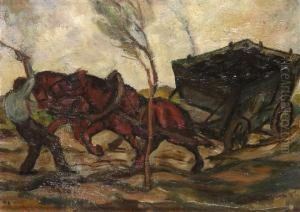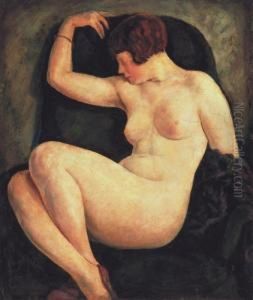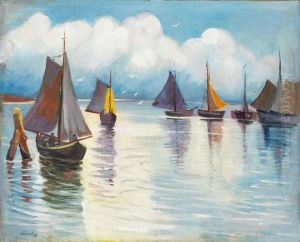Arthur Podolini Volkmann Paintings
Arthur Podolini-Volkmann was a German sculptor and painter born on June 28, 1856, in Leipzig, Germany. His full name was Arthur Ernst Wilhelm Podolini Volkmann, and he was sometimes known as Arthur Volkmann. He was part of the late 19th and early 20th centuries artistic movements, and his work reflects the transition from traditional to more modern forms of art.
Volkmann studied at the Royal Academy of Arts in Berlin from 1876. He was initially influenced by the academic style of his time, which was characterized by precise and realistic representations of subjects. However, his style evolved as he came under the influence of more progressive artistic circles. He developed a strong friendship with the painter Max Klinger, and through Klinger, he became associated with the Symbolist movement and its emphasis on the expression of emotional experiences through art.
Throughout his career, Volkmann's work displayed a fascination with the human form, and he created numerous sculptures and paintings that explored human anatomy and movement. His sculptures often depicted mythological or allegorical figures, and they were known for their expressive qualities and attention to detail.
In addition to his artistic endeavors, Volkmann was also a teacher and influenced a generation of German sculptors. He had a significant impact on the art community in Leipzig, where he was an active member of local art associations and participated in various exhibitions. His work received recognition and was displayed in several public spaces and collections.
Arthur Podolini-Volkmann's contributions to art were not limited to sculpture; he also produced a body of work as a painter, although he is less known for this aspect of his oeuvre. His paintings shared similar thematic concerns with his sculptures and often portrayed figures in contemplative or dramatic poses.
Volkmann continued to work and exhibit his art into the early 20th century, adapting to the changing artistic landscape while maintaining a distinct personal style. He passed away on January 18, 1940, in Leipzig. His legacy is preserved in the collections of several German museums, and he is remembered as a significant figure in the transition from 19th-century academic art to the more expressive and experimental approaches that characterized the early modernist period.


